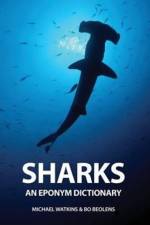av Michael Watkins & Bo Beolens
795,-
This fascinating reference book delves into the origins of the vernacular and scientific names of sharks, rays, skates and chimeras. Each entry offers a concise biography, revealing the hidden stories and facts behind each species' name. Full of interesting facts and humorous titbits, the authors' extensive research and detective work has made this book a comprehensive source of knowledge on everyone associated with the naming of a species. A fascinating resource for anyone with an interest in sharks, from curious naturalist to professional ichthyologist, it is an essential addition to the library of anyone wishing to satisfy those tickling questions on the mysteries behind the names.Sometimes a name refers not to a person but to a fictional character or mythological figure. Eptatretus eos is named after the Greek goddess of the dawn in reference to the pink colouring of the hagfish. The Chilean Roundray Urotrygon cimar, named after Centro de Investigacin en Ciencias del Mar y Limnologa in honour of its 20th anniversary, and the Angular Angelshark Squatina Guggenheim, named after the John Simon Guggenheim Memorial Foundation, are both named after institutions. The Whiteleg Skate Amblyraja taaf is just a shorthand way of describing a toponym - Territoire des Terres australes et antarctiques franaises. There are also entries which are light-hearted such as the one for a lady who told us "e;that decoration of her cakes have included roughtail skate Bathyraja trachura, red abalone Haliotis rufescens, and chinook salmon Oncorhynchus tshawytscha."e;Following the success of their previous Eponym Dictionaries, the authors have joined forces to give the Elasmobranch group of fishes a similar treatment but they have also included the describers and authors of the original descriptions of the fishes involved, in addition to those names that are, or appear to be, eponyms.They have tracked down some 850 names of living as well as dead people. Of these half are eponyms after people who have fish named after them and may also have described a fish or fishes. The other half are ichthyologists, marine biologists and other scientists who have become involved in the description and naming of sharks, rays, skates and chimeras. For each person mentioned there is brief, pithy biography. Additionally there are some 50 entries for what sound like eponyms but turned out not to have any connection to a person, such as the Alexandrine Torpedo is named after the city in Egypt and not Alexander the Great.In some cases these are a reminder of the courage of scientists whose dedicated research in remote locations exposed them to disease and even violent death. The eponym ensures that their memory will survive, aided by reference works such as this highly readable dictionary. Altogether 1,577 fishes are listed.




